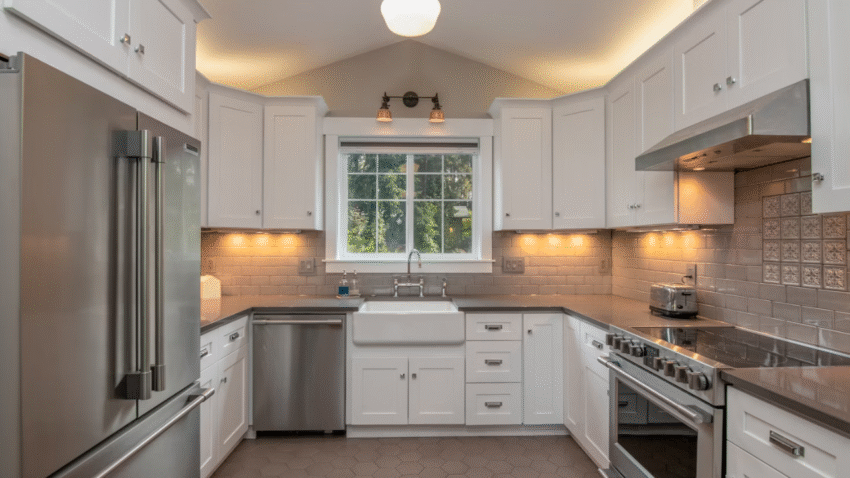Introduction
Tired of overcooked yolks or shells that won’t peel? Boiling eggs may seem simple, but getting them just right—every time—takes a bit of know-how. Whether you love soft-boiled eggs with a runny center or firm hard-boiled eggs for meal prep, this guide will teach you how to boil eggs perfectly every time with no gray rings or peeling nightmares. Say goodbye to guesswork and hello to consistent, delicious results.
Why Boiling Eggs Properly Matters in the Kitchen
Boiled eggs are a staple in many kitchens—for breakfast, salads, snacks, or protein-packed lunches. But poorly boiled eggs can lead to:
- Chalky yolks and rubbery whites
- Greenish-gray rings from overcooking
- Difficulty peeling the shell
- Wasted food and frustration
Mastering this basic kitchen skill improves your meal prep efficiency, adds protein to your diet, and enhances your presentation—especially when serving deviled eggs or egg salads.
Step-by-Step Guide to Boiling Eggs
Here’s how to get perfect boiled eggs with your desired doneness, every single time.
1. Start with the Right Eggs
Use eggs that are at least 5–7 days old. Fresh eggs are harder to peel because the pH of the white hasn’t risen enough to separate from the shell membrane.
Kitchen Tip: If you only have fresh eggs, steam them instead of boiling—they’ll be easier to peel.
2. Bring Eggs to Room Temperature
Take eggs out of the fridge about 15–20 minutes before boiling. Room-temperature eggs are less likely to crack and cook more evenly.
Reminder: Skip this step if you’re in a rush—it’s optional but ideal.
3. Place Eggs in a Pot and Cover with Cold Water
Gently place eggs in a single layer in a saucepan. Add cold water until the eggs are covered by about 1 inch.
Note: Starting with cold water helps prevent cracking and ensures even cooking from edge to center.
4. Bring to a Boil, Then Remove from Heat
Place the pot over medium-high heat and bring the water to a full boil. As soon as it reaches a rolling boil, turn off the heat, cover the pot with a lid, and let it sit.
Important: Don’t continue boiling. Letting the eggs cook in hot water gives you more control over doneness.
5. Follow These Timings for Desired Doneness
Set a timer based on how you like your eggs:
- 4 minutes: Soft-boiled with very runny yolk
- 6 minutes: Jammy yolk, just slightly soft in the center
- 8 minutes: Firm whites with a slightly creamy center
- 10 minutes: Fully cooked, classic hard-boiled
- 12 minutes: Very firm yolk, ideal for egg salads or deviled eggs
Kitchen Tip: Use a kitchen timer or phone alarm to stay precise—every minute counts.
6. Transfer to an Ice Bath Immediately
When time is up, use tongs or a slotted spoon to transfer eggs into a bowl filled with ice water. Let them sit for at least 5–10 minutes.
- This stops the cooking process
- Prevents overcooking and gray yolks
- Helps separate the shell from the egg for easier peeling
Optional: If no ice is available, rinse under very cold running water for several minutes.
7. Peel and Enjoy (or Store)
To peel easily:
- Gently tap the egg on a hard surface
- Roll it slightly to crack all around
- Start peeling from the wider end, where the air pocket is
Store unpeeled eggs in the fridge for up to 7 days. Peeled eggs should be eaten within 3–4 days for best taste and texture.
Common Mistakes to Avoid
Don’t let small errors ruin your eggs. Here are common mistakes and how to avoid them:
Mistake 1: Boiling the Eggs for the Entire Time
Solution: Let eggs sit in hot water with the heat off. This gives even cooking without overdoing it.
Mistake 2: Not Using an Ice Bath
Solution: An ice bath is crucial. It stops the cooking instantly and makes peeling easier.
Mistake 3: Using Super Fresh Eggs
Solution: Use eggs that are 5–10 days old for best peeling results.
Mistake 4: Peeling While Too Warm
Solution: Always let eggs cool fully before peeling. Warm eggs can cling to their shells.
Mistake 5: Guessing Cooking Time
Solution: Use a timer for accuracy. A few extra minutes can mean chalky yolks and sulfur rings.
Extra Tips & Kitchen Hacks
Take your egg game up a notch with these handy tips:
Tip 1: Add Vinegar or Baking Soda to the Water
Adding 1 tablespoon of vinegar or ½ teaspoon of baking soda to the boiling water can make peeling easier by breaking down the shell’s bond with the egg white.
Tip 2: Crack and Soak
If an egg still won’t peel, crack it all over and return it to cold water for 5 more minutes. Water can seep under the shell to help loosen it.
Tip 3: Use a Pin or Thumbtack
Poke a small hole in the rounded end of the egg before boiling to release air and reduce cracking. Only do this if you’re comfortable handling eggs carefully.
Next Task: After boiling your eggs perfectly, try turning them into deviled eggs, adding them to salads, or making a classic egg sandwich.
Conclusion
Perfectly boiled eggs don’t require special gadgets or guesswork—just a simple, repeatable process. From soft to hard-boiled, mastering the timing and using an ice bath are the keys to success. Avoid common mistakes like overboiling or skipping the cooling step, and you’ll have flawless eggs every time. Once you’ve got this down, you’ll never go back to overcooked, hard-to-peel eggs again.
Bookmark this guide to nail perfect boiled eggs whenever you need them!
